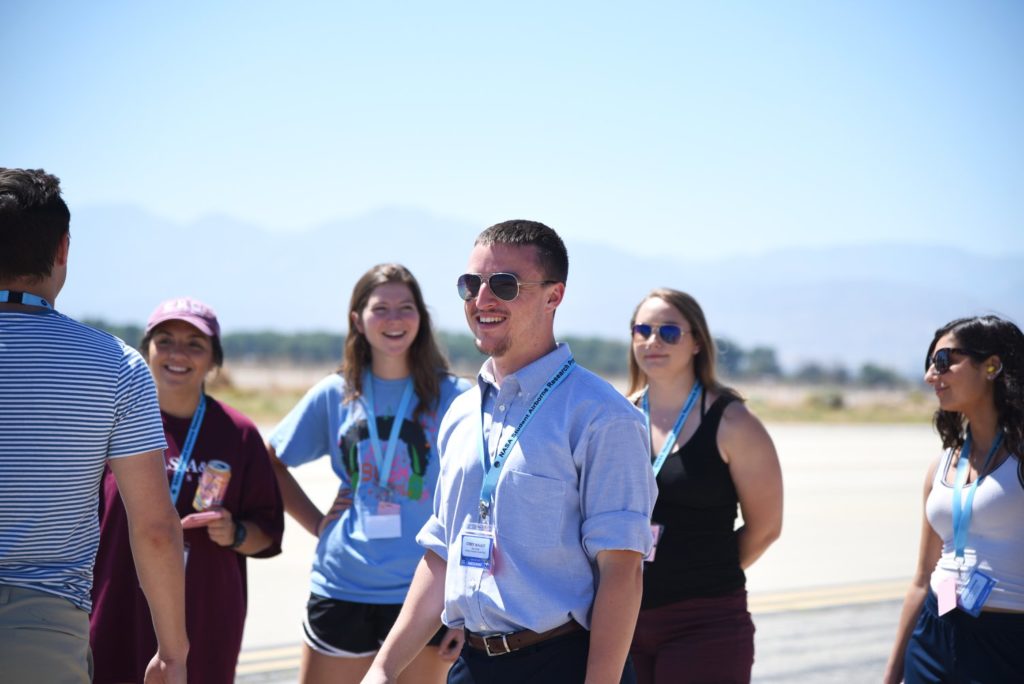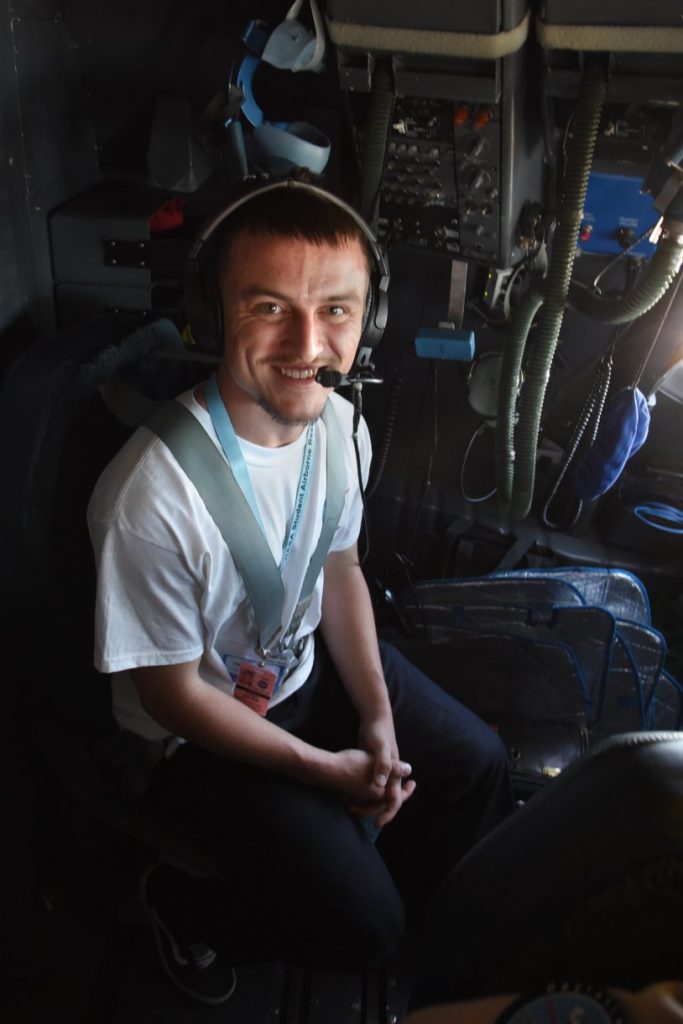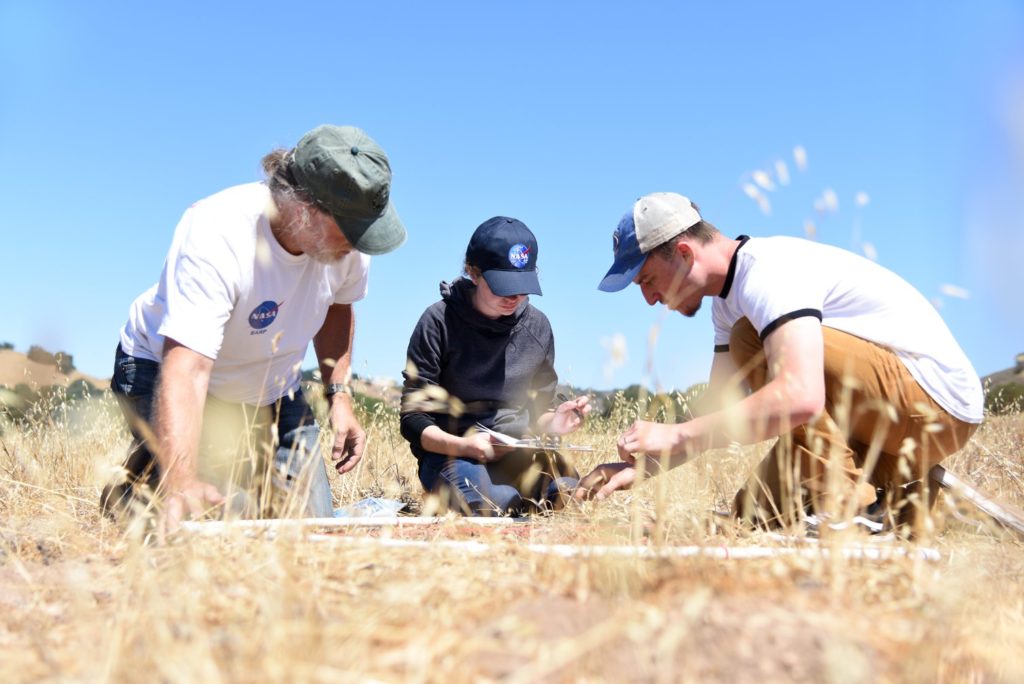
By Corey Walker / NASA ARMSTRONG FLIGHT RESEARCH CENTER, PALMDALE, CALIFORNIA /
My name is Corey Walker. One of the most incredible things I’ve done on paper is become a NASA intern through the agency’s Student Airborne Research Program, otherwise known as SARP. Why? I grew up in Etowah County, Alabama which has a poverty rate well above the national average. At the end of the year, I will be one of just 8 percent of people from my hometown who will have achieved a bachelor’s degree. I’ve come to recognize that the opportunity I’ve had is somewhat of an anomaly for many who have watched my success.
I wanted to participate in this Q&A blog to share my experience with the NASA SARP program and to express my gratitude towards those who have given someone like me a chance to succeed. I also want to encourage the next generation of student scientists to apply for opportunities like SARP to broaden their skill sets and to experience what field research and lab analysis is all about.
What do you think it takes to become a NASA intern
CW: The conditions that create a NASA intern are variable depending on who you ask. However, for me it begins with ordinary people who have extraordinarily impacted my life. Along the way family, friends, teachers, and mentors have taught me the value of perseverance, working hard, and pushing yourself beyond known limits.

Why did you apply?
CW: The answer to this question lies in the evolution of my interests. For example, when I was a freshman, I was an English major. I applied the skills I learned with my time in the English department to the development of a YouTube channel, which I’ve since neglected. My sophomore year, I changed my major to nursing. While in this major, I applied myself to the rigorous study of science. Through this study, I produced a bit of character development and self-confidence. As science education molded me, I decided to study biology and education as a double major. I’m proud to report that I graduated this month. As a future science educator, I want to use my experience in the classroom to leverage curiosity and the understanding of complex systems. I also want to inspire the next generation to apply themselves towards their own challenging, individual goals like the one I achieved by working for NASA.
This isn’t the first time you’ve applied with the program. What inspired you to persevere and apply again?
CW: I have heard lots of teachers say something cliché like, “You can do anything you set your mind to.” I personally believe in this phrase, first because I am an optimist, and second because I think humans are powerful when they decide to act. However, I think that there is a responsibility that comes with believing this phrase. Personally, I think it would be unfair for me to tell my students to believe in themselves if I first did not believe in me. In a lot of ways, applying to SARP again is just myself modeling for students the act of taking responsibility for my beliefs. I also hope my second application to SARP teaches students an important lesson. Failure is feedback.

Why do you think internship opportunities like SARP are important for college students?
CW: I came to SARP from a small, liberal arts institution in East-Central Kentucky called Berea College. I am the first SARP alum from my school. The connections I made with this research experience will be extremely valuable to future generations. I intend to help someone else from Berea find the opportunity to work at NASA by connecting them to the network of scientists I have created. I also think opportunities like SARP are a great resume booster. This research experience under my belt will certainly prepare me better for graduate school.
What do you think undergraduate students can benefit from most by participating in opportunities like SARP?
CW: SARP is interesting because it puts you in an environment where you are forced to learn new things you’ve never thought about studying. As an educator, I am a big proponent of discovering new things. While at SARP, I was introduced to analytical tools and software like ENVI and MATLAB. I even had the opportunity to work with ArcGIS and ArcMap. This made me see a side of science that was utterly new and outside to anything I had ever contemplated.
Another thing that is beneficial about SARP is the way you get to be inspired by all kinds of interesting scientists and experiences. Some of my favorite moments were when I got to hold Sherwood Rowland’s Nobel Prize and see a real Mars lander being built at JPL for the 2020 mission.

Describe your research project and group.
CW: Something I noticed while flying in Southern California was all the tile or red-shingle roofs. This was certainly different from where I grew up and intrigued me. Because of my experiences being a volunteer firefighter with the city of Berea, I began to wonder how defensible red-shingle roofs were compared to wood shingle roofs if exposed to wildfire. This interest, along with help from mentors Alana Ayasse and Dr. Dar Roberts gave me the desire to develop a project where I mapped fire risk using remote sensing instruments. In my project, I successfully mapped materials like non-photosynthetic vegetation (NPV) or dead grass, green vegetation (GV) and soil and road in Goleta. I then compared maps I made to the location of the Holiday Fire, which started on July 11, 2018 and destroyed 28 structures.
How did you collect data for your research?
CW: I used data taken from NASA’s ER-2 16 days prior to the Holiday Fire. It was important for me to use data that was as close to the fire date as possible. I did this in order to accurately assess what kinds of materials were on the ground before the fire started.

What did you learn from the research?
CW: Not only did I show that the Holiday Fire occurred in a high fire risk area, but I also found interesting patterns. More specifically, my maps showed high fire risk in areas to the north and south of Goleta’s urban center where there is less road and more vegetation. My maps also show high fire risk in areas where property values are higher, which is a little alarming. For example, to the north, I found properties costing upwards of $700,000 surrounded with materials that could easily burn.
How do you plan to use this internship experience and your education going forward?
CW: Because of SARP, all the kids at the high school I teach at think I’m “cool.” This should be the objective right? It is interesting how working for a widely known name can inspire students and make them believe they could also do something “crazy” like working for NASA. Besides bringing my experiences into the classroom, I’ve decided I want to pursue a PhD in Earth Sciences and one day become a professor.
I’ve recently become interested in a hazards program at Oxford in the UK. I’ve certainly gained some self-confidence from getting to work for NASA, which has given me the desire to aim for a school like Oxford.
There is a professor named Dr. Tasmin Mather at Oxford who has used the European Space Agency’s Sentinel-1 to study volcanoes for the benefit of international communities. I find this work to be interesting as a scientist and volunteer firefighter. I like the way she uses science to inform the public of hazardous threats. I think it would be really cool to use my experience at SARP as a way to set me apart when I apply, so that I could one day work with someone like Dr. Mather.

Is there anyone else you’d like to recognize that has helped along your journey?
CW: I want to recognize and thank my family who have invested their time, resources and love into my success. I also had a number of teachers and mentors who went out of their way to push me out of my comfort zone. Lastly, I want to thank my wife Emily, who sacrificed time that could be spent together so that I could do science in California. Thank you all.
For more information on the Student Airborne Research Program and to apply visit: https://baeri.org/sarp-2019/
To read other blogs written by current and former SARP students visit: https://blogs.nasa.gov/earthexpeditions/?s=SARP




